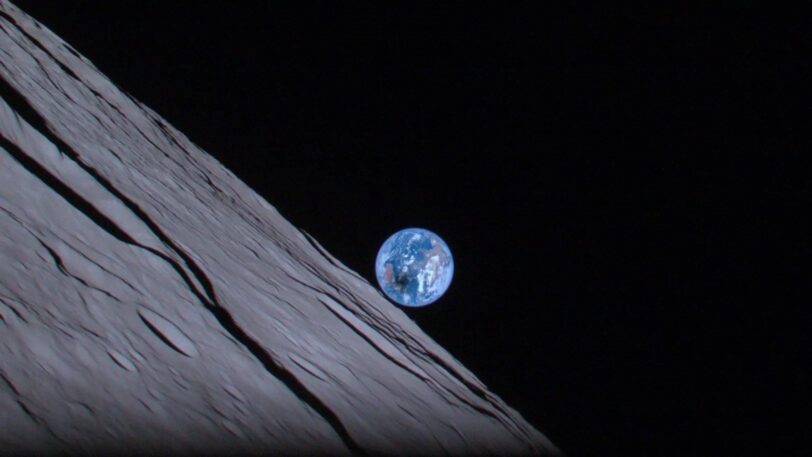Days before its apparent crash landing into the moon’s surface on April 25, 2023, Japan’s Hakuto-R lunar lander managed to capture a stunning image of our planet. Reminiscent of Apollo 8’s iconic “Earthrise” photo, the image depicts our planet delicately perched atop the lunar horizon, resembling a perfect blue marble. This breathtaking image was captured as Australia experienced a total solar eclipse on April 20, adding to the visual magnificence of the photo.

Hakuto-R was launched aboard a SpaceX Falcon 9 rocket in December 2022 as part of Tokyo-based private space company ispace’s Mission 1, which aimed to be the first commercial craft to successfully touch down on the moon. However, the fate of the mission was not as intended. As the craft began its 60-mile descent towards the lunar surface, ground controllers unexpectedly lost contact with it, according to a report by The Washington Post. Despite several frantic minutes of trying to re-establish contact, mission controllers concluded that the spacecraft had not landed as intended.
“We have to assume we could not complete the landing on the lunar surface,” Takeshi Hakamada, ispace’s founder and CEO, said during the live broadcast. Later analysis revealed that Hakuto-R likely ran out of propellant to slow the descent of the spacecraft as it approached the ground.
Regrettably, Hakuto-R is not the first private space venture to crash-land on the moon. In 2019, the Beresheet probe, a joint venture between Israeli company SpaceIL and Israeli Aerospace Industries, also slammed into the lunar surface when a gyroscope failed during its braking procedure. Nevertheless, the Hakuto-R managed to deliver some of the most spectacular images ever taken in lunar orbit. Although its mission was unsuccessful, its approach will provide valuable data for future missions.
It is worth noting that to date, only probes built by government agencies representing the United States, Russia, and China have completed “soft” landings on the moon. However, the increasing interest in lunar exploration and exploitation is leading to more private and commercial missions. India, Russia, and SpaceX have lunar trips scheduled for later this year, and Tokyo-based private space company ispace is planning to launch two more moon missions in 2024 and 2025.
“We have already achieved so many things during this Mission 1,” Hakamada said during the Haruto-R webcast. Later, he added in a statement, “We will keep moving forward.”
Despite the unfortunate fate of the Hakuto-R, the beauty of the images it captured serves as a reminder of the wonders of space exploration, and the continuing efforts to reach the moon and beyond.
READ MORE: Watch as Artemis 1’s Orion capsule flies by the Moon





